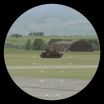(Press-News.org) CHAMPAIGN, lll. — A new study offers a detailed look at the status of Lyme disease in Central Illinois and suggests that deer ticks and the Lyme disease bacteria they host are more adaptable to new habitats than previously appreciated.
Led by researchers at the University of Illinois, the study gives an up-close view of one region affected by the steady march of deer ticks across the upper Midwest. Their advance began in Wisconsin and Minnesota, and is moving at a pace of up to two counties a year in Illinois and Indiana.
Today the deer tick is established in 26 Illinois counties, up from just eight in 1998, said Illinois Department of Public Health entomologist Linn Haramis. Reports of human Lyme disease cases in the state have more than tripled in the same period, he said.
"We've had several years in a row where we've had over 100 cases, up from about 30 per year more than 10 years ago," Haramis said. "It's not a huge increase, but it's been steady and there's an upward trend."
Deer ticks are known to do best in forested areas, where they can readily move from small mammals (which provide their first meal) to moist leaf litter on the forest floor, and then to deer, on which they mate. Deer ticks do not pick up the Lyme infection from deer, said Jennifer Rydzewski, who completed her master's degree with the study in the department of natural resources and environmental sciences at the University of Illinois.
"The deer tick will feed on a variety of mammals, birds and even reptiles," she said. "But Borrelia burgdorferi, the bacterium that causes Lyme disease, replicates really well within white-footed mice, so white-footed mice are the main reservoir that passes that bacterium on to the immature ticks that are feeding on it."
White-footed mice also are forest dwellers. Prior to the new study, little was known about whether, or how, Lyme disease persists in other habitat types.
To determine if Lyme disease had gained a foothold in the patchwork of forests, farms and prairies of Central Illinois, researchers trapped small mammals in Allerton Park, a 1,500-acre (600-hectare) natural area in Piatt County. They focused on four habitat types: young forest, mature forest, a flood plain and a 30-acre (12-hectare) patch of prairie surrounded by woods and agricultural fields.
The researchers removed deer ticks from the mammals they trapped and tested the ticks for Lyme disease.
They found that the immature forest and the prairie hosted the highest percentage of deer-tick-infested mammals, the highest number of ticks per mammal trapped and the highest rates of ticks infected with Lyme disease of the four habitat types evaluated.
"The highest prevalence of B. burgdorferi infection was found (in deer tick larvae) from the prairie (27 percent) followed by the young forest (15 percent), the mature forest (6 percent) and the flood plain (6 percent)," the researchers wrote.
"Interestingly, all of the positive ticks from the prairie were from prairie voles, not the typical white-footed mouse," Rydzewski said. There also were many more ticks per animal on the prairie voles than on the white-footed mice of the forest, she said.
This is the first study to report evidence that the prairie vole may potentially serve as a competent reservoir host for the Lyme disease bacterium, B. burgdorferi, said Nohra Mateus-Pinilla, a wildlife veterinary epidemiologist at the Illinois Natural History Survey who led the study with Rydzewski and natural resources and environmental sciences emeritus professor Richard Warner. (The Survey is a unit of the Prairie Research Institute at Illinois.)
"The fact that we found tick larvae feeding so prominently on prairie voles and those ticks were infected and hadn't had a chance to feed on anything else is a very strong indicator that we are dealing with a different reservoir of Lyme disease that deserves more attention," Mateus-Pinilla said.
The researchers hypothesize that when newly hatched ticks find themselves on the prairie, they latch on to the first small mammal that comes along, which in most cases is a prairie vole (white-footed mice prefer the forest). The abundance of prairie voles in the prairie is much lower than that of the white-footed mice in the forest, so more tick larvae and nymphs end up on the same few prairie voles. Since the number of ticks per animal is higher on the prairie, the likelihood of infection is higher there as well.
"The landscape of Illinois, especially the northern and central area, is very fragmented with agricultural and other development, so there aren't really big continuous areas that are forested," Rydzewski said. "And so maybe these ticks are finding new habitats to establish themselves in because of the lack of previous habitats."
"What's exciting about the new findings is that we are dealing with potentially new mechanisms of disease transmission that we just have not explored and perhaps we do not understand," Mateus-Pinilla said. "We need to think outside of what we already know about Lyme disease transmission."
The new study appears in the journal Vector-Borne and Zoonotic Diseases.
INFORMATION:
Researchers from the U. of I. department of pathobiology and Michigan State University also contributed to this study.
Editor's note: To contact Nohra Mateus-Pinilla, call 217-333-6856; email nohram@illinois.edu.
The paper, "Ixodes scapularis and Borrelia burgdorferi Among Diverse Habitats Within a Natural Area in East-Central Illinois," in the journal Vector-Borne and Zoonotic Diseases, is available from the U. of I. News Bureau.
Lyme disease tick adapts to life on the (fragmented) prairie
2011-06-22
ELSE PRESS RELEASES FROM THIS DATE:
Aces High, the Combat Simulator Sensation, Introduces New Version
2011-06-22
Since 2000, Aces High has been the leader of the pack in flight simulation games. One reason is that HiTech Creations does not believe in standing pat with what they have created. Over the years more than 37 different versions of this wildly popular World War 2 flight simulator game have been introduced and this new version is far and away the best.
While other companies tinker around with four or five different games, in effect watering down the attention given to any one game, HiTech Creations founder Dale Addink has always believed that the concentration of talent ...
UC Riverside neuroscientists' discovery could bring relief to epilepsy sufferers
2011-06-22
RIVERSIDE, Calif. – Researchers at the University of California, Riverside have made a discovery in the lab that could help drug manufacturers develop new antiepileptic drugs and explore novel strategies for treating seizures associated with epilepsy – a disease affecting about two million Americans.
Neurons, the basic building blocks of the nervous system, are cells that transmit information by electrical and chemical signaling. During epileptic seizures, which generally last from a few seconds to minutes and terminate spontaneously, the concentrations of ions both ...
Non-coding RNA has role in inherited neurological disorder -- and maybe other brain diseases too
2011-06-22
A team of scientists, led by researchers at the University of California, San Diego School of Medicine, have uncovered a novel mechanism regulating gene expression and transcription linked to Spinocerebellar ataxia 7, an inherited neurological disorder. The discovery promises to have broad ramifications, suggesting that abundant non-coding transcripts of ribonucleic acid (RNA) may be key players in neurological development and function, and could be powerful targets for future clinical therapies.
The research, headed by Albert La Spada, MD, PhD, chief of the division ...
Acrobatics for anyons: New test for elusive fundamental particle proposed
2011-06-22
In quantum physics there are two classes of fundamental particles. Photons, the quanta of light, are bosons, while the protons and neutrons that make up atomic nuclei belong to the fermions. Bosons and fermions differ in their behavior at a very basic level. This difference is expressed in their quantum statistics. In the 1980s a third species of fundamental particle was postulated, which was dubbed the anyon. In their quantum statistics, anyons interpolate between bosons and fermions.
"They would be a kind of missing link between the two known sorts of fundamental ...
Angry online commenters can cause negative perceptions of corporations, MU researchers find
2011-06-22
COLUMBIA, Mo. -With the increasing pervasiveness of social media and online communication in the operation of most organizations and corporations, little is known about the potential effects of public expressions of anger displayed throughout various online sources. Now, researchers at the University of Missouri have found that angry user-generated comments on Internet sites can further perpetuate negative perceptions of an organization undergoing the crisis.
Based on her findings, Bo Kyung Kim, a doctoral student in the University of Missouri School of Journalism, urges ...
Planning is key to a healthy and happy retirement, studies find
2011-06-22
COLUMBIA, Mo. –Retirement is often viewed as a time to relax, travel, participate in leisurely activities and spend time with family. However, for many older adults, chronic health problems and poor planning often hinder the enjoyment of retirement. Now, a University of Missouri researcher has found that planning for changes in lifestyle and health leads to better retirement for married couples.
Angela Curl, an assistant professor in the School of Social Work, says it is important for couples to plan for retirement, both financially and socially and to consider the changes ...
UC San Diego researchers create tool to put the lid on solar power fluctuations
2011-06-22
How does the power output from solar panels fluctuate when the clouds roll in? And can researchers predict these fluctuations? UC San Diego Professor Jan Kleissl and Matthew Lave, a Ph.D. student in the Department of Mechanical and Aerospace Engineering at the Jacobs School, have found the answer to these questions. They also have developed a software program that allows power grid managers to easily predict fluctuations in the solar grid caused by changes in the cloud cover. The program uses a solar variability law Lave discovered.
The finding comes at a time when the ...
Ft. Worth Restaurant, Chef Point Cafe Announces "99" Deals
2011-06-22
It will soon be happening again! On May 18th Chef Point Cafe rolled back the price of gasoline from 6:30-7:30 a.m. to 99 cents per gallon to show appreciation to their loyal horde of customers and to also kick off their "99" deals in celebration of their restaurant expansion. And on July 4th their next "99" deal will take place. The big question is: what will the deal be this time?
This wildly popular and iconic Ft. Worth fine dining establishment is in the process of "remembering when" things were simpler in America; when 99 cents could ...
First genetic mutation linked to heart failure in pregnant women
2011-06-22
Researchers at the Intermountain Medical Center Heart Institute in Salt Lake City have identified the first genetic mutation ever associated with a mysterious and potentially devastating form of heart disease that affects women in the final weeks of pregnancy or the first few months after delivery.
The disease, peripartum cardiomyopathy (PPCM), weakens a woman's heart so that it no longer pumps blood efficiently. The disease is relatively rare, affecting about one in 3,000 to 4,000 previously healthy American women. Most PPCM patients are treated with medicine, but about ...
U of M researchers find smart decisions for changing environmental times
2011-06-22
You've just been told you're going on a trip. The only problem is, you don't know where you're going, how you'll be traveling, or what you'll do when you get there.
Sound like a wild ride? It's the one our planet is on right now. As land use, human population, consumption and atmospheric greenhouse gas concentrations change at an unprecedented pace with complex and unpredictable interactions, it's anybody's guess where we'll end up or what we can do to ensure the most favorable outcome.
Recognizing that "guess" is not good enough when talking about the viability of ...





